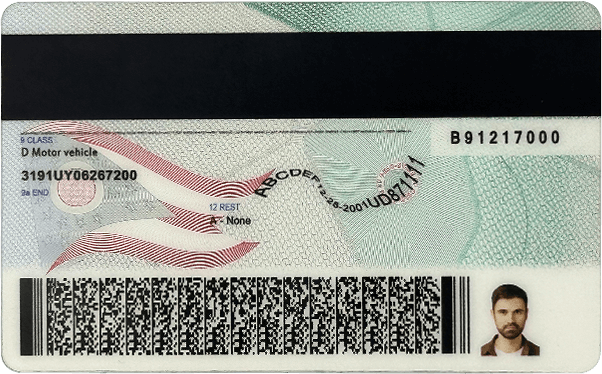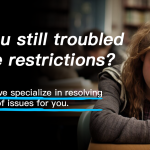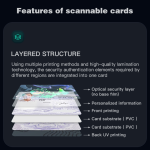Nightclubs are vibrant social venues where people gather to enjoy music, dancing, and socializing. However, ensuring the safety and legality of their patrons is of utmost importance. One crucial aspect of this is verifying driver’s licenses to prevent under – age entry and to avoid dealing with fake identification documents. Here are the ways nightclubs typically go about this process.
Visual Inspection
The first line of defense for nightclub staff when verifying a driver’s license is a thorough visual inspection. They check for various physical characteristics of the license. The color and quality of the paper or plastic material are carefully examined. A genuine driver’s license is usually made of high – quality material that has a specific texture and thickness. For example, in the United States, most state – issued licenses are made of a durable plastic with a smooth finish on the front and back.
Staff also look at the printing quality. Text on a real license is sharp, clear, and evenly printed. There should be no smudging, blurring, or uneven ink distribution. The fonts used on official driver’s licenses are specific and consistent. Additionally, nightclubs check for any signs of tampering, such as peeling, bubbling, or discoloration on the surface of the license. These could be indications that the license has been altered or is a fake.

Examining Security Features
Modern driver’s licenses come equipped with a variety of security features designed to prevent counterfeiting. One common feature is the hologram. Holograms on driver’s licenses are three – dimensional images that change appearance when viewed from different angles. They are extremely difficult to replicate accurately. Nightclub staff are trained to identify the specific holograms associated with the driver’s licenses issued in their region. For instance, some states may have a state seal or a unique logo in hologram form on the license.
Another important security feature is the microprinting. Microprinting consists of tiny text that is almost invisible to the naked eye but can be easily seen under magnification. This text often contains important information such as the license holder’s name, address, or identification number. Nightclubs may use magnifying glasses to check for the presence of microprinting and ensure that it is consistent with the rest of the license information. Some licenses also have UV – reactive elements. When exposed to ultraviolet light, certain parts of the license, such as security threads or specific inks, will glow or change color. Nightclub bouncers may use UV – lights to check for these hidden features.
Verification of Information
Nightclub staff also cross – check the information on the driver’s license with various factors. They compare the photo on the license with the person presenting it. The photo should match the individual’s current appearance in terms of facial features, hair color, and general look. It’s important to note that some people may have changed their appearance slightly since the license was issued, but there should still be a strong resemblance.
The date of birth on the license is carefully verified to ensure that the individual is of legal drinking age. In many countries, the legal drinking age is 18 or 21, and nightclubs must strictly enforce this. Staff may also check for any discrepancies in the address or other personal information on the license. If the address seems outdated or inconsistent with the person’s claims, it could be a red flag.
Use of Technology
In addition to manual inspection methods, some nightclubs are starting to use technology to verify driver’s licenses. ID scanners are becoming more popular. These scanners can read the magnetic stripe or the RFID (Radio – Frequency Identification) chip on the driver’s license. By scanning the license, the scanner can quickly retrieve information such as the license holder’s name, date of birth, and license expiration date. The scanner can also cross – reference this information with a database to check for any signs of fraud or invalidation.
Some advanced ID scanners can even analyze the security features of the license. They can detect the presence of holograms, microprinting, and UV – reactive elements more accurately than a human eye. These scanners can also flag licenses that have been reported as lost, stolen, or fake in a central database. While ID scanners are not foolproof, they add an extra layer of security to the license – verification process.
Staff Training
To effectively verify driver’s licenses, nightclub staff need to be well – trained. Training programs often cover the physical characteristics of genuine licenses, how to identify common types of fakes, and the use of verification tools such as magnifying glasses and UV – lights. Staff are also taught how to handle difficult situations when they suspect a license is fake. They are trained to be polite but firm when asking for additional identification or when denying entry to someone with a suspected fake license.
Regular refresher courses are also important to keep staff updated on the latest trends in fake identification and new security features on driver’s licenses. This ensures that they are always prepared to handle the verification process accurately and efficiently.
Common Problems and Solutions
- Problem: Difficulty in Spotting Subtle Fakes
Solution: Provide continuous and in – depth training for staff. Use real – life examples of fake licenses that have been intercepted in the past. Regularly update the training materials to include the latest counterfeiting techniques and how to identify them. Additionally, encourage staff to share their experiences and observations regarding suspicious licenses. - Problem: Inconsistent Security Features Across States/Regions
Solution: Create a comprehensive reference guide that details the security features of driver’s licenses from different states or regions. This guide can be made available to all staff members for quick reference. Staff can also be trained on the general principles of security features so that they can apply their knowledge even when faced with a license from an unfamiliar region. - Problem: Outdated ID Scanners
Solution: Regularly update the ID scanning technology used in the nightclub. Keep track of the latest advancements in ID – verification technology and invest in scanners that can accurately detect a wide range of fake licenses. Establish a maintenance schedule for the scanners to ensure they are always in good working condition. - Problem: Staff Fatigue Affecting Verification Accuracy
Solution: Rotate staff during peak hours to prevent fatigue. Provide breaks and ensure that staff are well – rested. Also, implement a system of double – checking by a second staff member, especially when dealing with licenses that seem suspicious. This can help catch any errors that may occur due to staff fatigue. - Problem: Patrons with Valid Licenses but Changed Appearance
Solution: Train staff to handle such situations with sensitivity. They should ask for additional forms of identification, such as a credit card with the same name or a utility bill with the same address. If the patron has a valid reason for the appearance change, such as a recent haircut or a change in glasses, staff should use their judgment to determine if the person is the rightful license holder.
Fake ID Pricing
unit price: $109
| Order Quantity | Price Per Card |
|---|---|
| 2-3 | $89 |
| 4-9 | $69 |
| 10+ | $66 |



